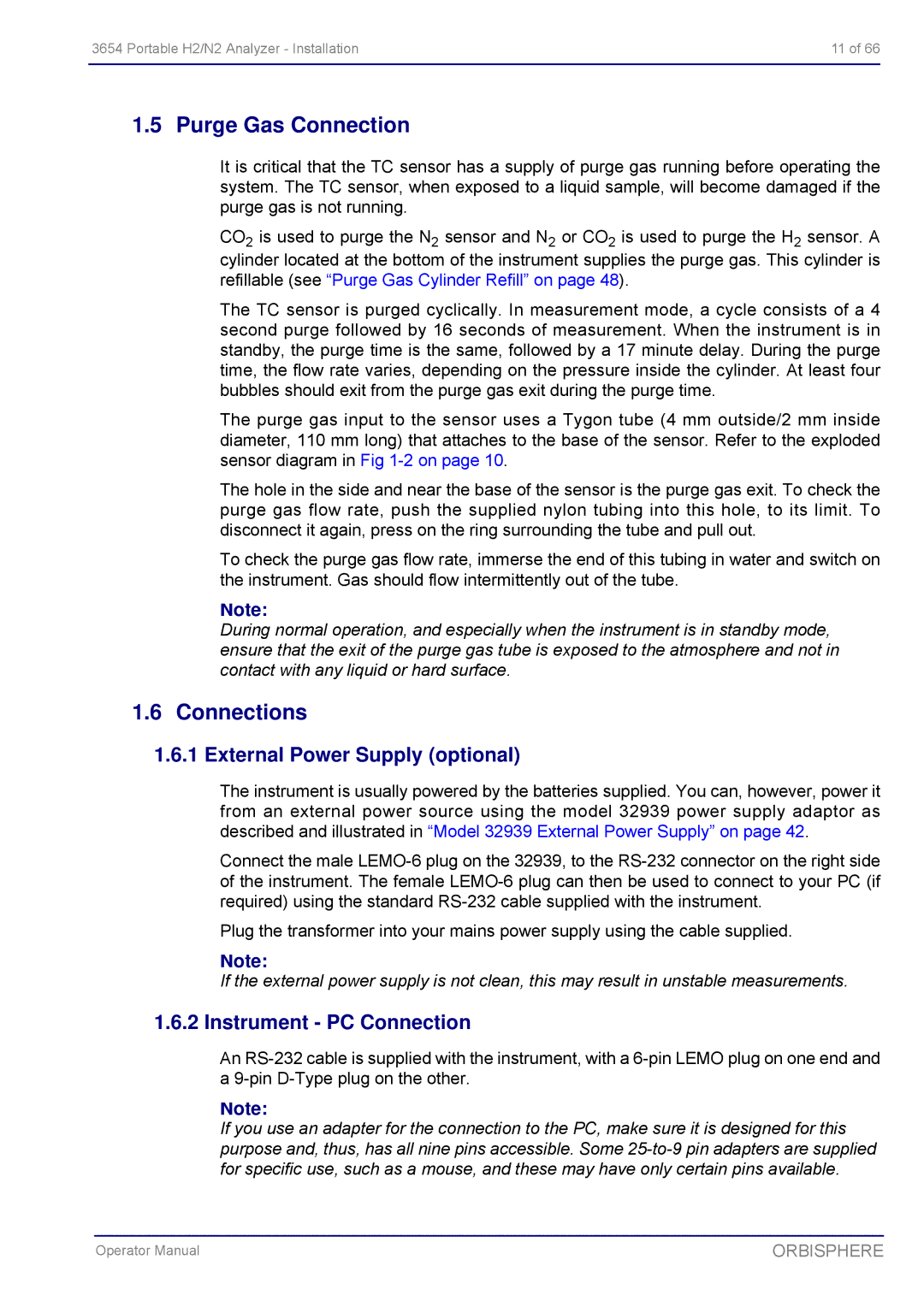3654 Portable H2/N2 Analyzer - Installation | 11 of 66 |
|
|
1.5 Purge Gas Connection
It is critical that the TC sensor has a supply of purge gas running before operating the system. The TC sensor, when exposed to a liquid sample, will become damaged if the purge gas is not running.
CO2 is used to purge the N2 sensor and N2 or CO2 is used to purge the H2 sensor. A cylinder located at the bottom of the instrument supplies the purge gas. This cylinder is refillable (see “Purge Gas Cylinder Refill” on page 48).
The TC sensor is purged cyclically. In measurement mode, a cycle consists of a 4 second purge followed by 16 seconds of measurement. When the instrument is in standby, the purge time is the same, followed by a 17 minute delay. During the purge time, the flow rate varies, depending on the pressure inside the cylinder. At least four bubbles should exit from the purge gas exit during the purge time.
The purge gas input to the sensor uses a Tygon tube (4 mm outside/2 mm inside diameter, 110 mm long) that attaches to the base of the sensor. Refer to the exploded sensor diagram in Fig
The hole in the side and near the base of the sensor is the purge gas exit. To check the purge gas flow rate, push the supplied nylon tubing into this hole, to its limit. To disconnect it again, press on the ring surrounding the tube and pull out.
To check the purge gas flow rate, immerse the end of this tubing in water and switch on the instrument. Gas should flow intermittently out of the tube.
Note:
During normal operation, and especially when the instrument is in standby mode, ensure that the exit of the purge gas tube is exposed to the atmosphere and not in contact with any liquid or hard surface.
1.6Connections
1.6.1External Power Supply (optional)
The instrument is usually powered by the batteries supplied. You can, however, power it from an external power source using the model 32939 power supply adaptor as described and illustrated in “Model 32939 External Power Supply” on page 42.
Connect the male
Plug the transformer into your mains power supply using the cable supplied.
Note:
If the external power supply is not clean, this may result in unstable measurements.
1.6.2 Instrument - PC Connection
An
Note:
If you use an adapter for the connection to the PC, make sure it is designed for this purpose and, thus, has all nine pins accessible. Some
Operator Manual | ORBISPHERE |
